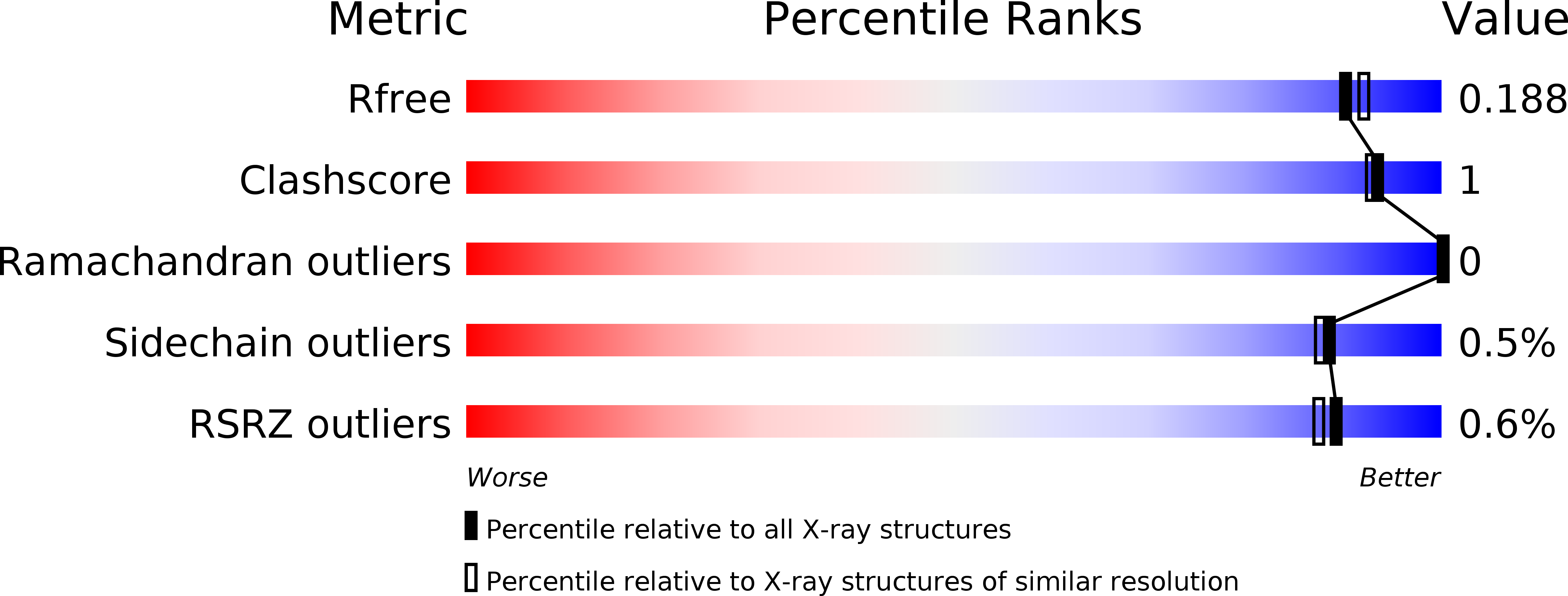Rationally engineered flavin-dependent oxidase reveals steric control of dioxygen reduction.
Zafred, D., Steiner, B., Teufelberger, A.R., Hromic, A., Karplus, P.A., Schofield, C.J., Wallner, S., Macheroux, P.(2015) FEBS J 282: 3060-3074
- PubMed: 25619330
- DOI: https://doi.org/10.1111/febs.13212
- Primary Citation of Related Structures:
4PVE, 4PVH, 4PVJ, 4PVK, 4PWB, 4PWC - PubMed Abstract:
The ability of flavoenzymes to reduce dioxygen varies greatly, and is controlled by the protein environment, which may cause either a rapid reaction (oxidases) or a sluggish reaction (dehydrogenases). Previously, a 'gatekeeper' amino acid residue was identified that controls the reactivity to dioxygen in proteins from the vanillyl alcohol oxidase superfamily of flavoenzymes. We have identified an alternative gatekeeper residue that similarly controls dioxygen reactivity in the grass pollen allergen Phl p 4, a member of this superfamily that has glucose dehydrogenase activity and the highest redox potential measured in a flavoenzyme. A substitution at the alternative gatekeeper site (I153V) transformed the enzyme into an efficient oxidase by increasing dioxygen reactivity by a factor of 60,000. An inverse exchange (V169I) in the structurally related berberine bridge enzyme (BBE) decreased its dioxygen reactivity by a factor of 500. Structural and biochemical characterization of these and additional variants showed that our model enzymes possess a cavity that binds an anion and resembles the 'oxyanion hole' in the proximity of the flavin ring. We showed also that steric control of access to this site is the most important parameter affecting dioxygen reactivity in BBE-like enzymes. Analysis of flavin-dependent oxidases from other superfamilies revealed similar structural features, suggesting that dioxygen reactivity may be governed by a common mechanistic principle.
Organizational Affiliation:
Institute of Biochemistry, Graz University of Technology, Austria.

















